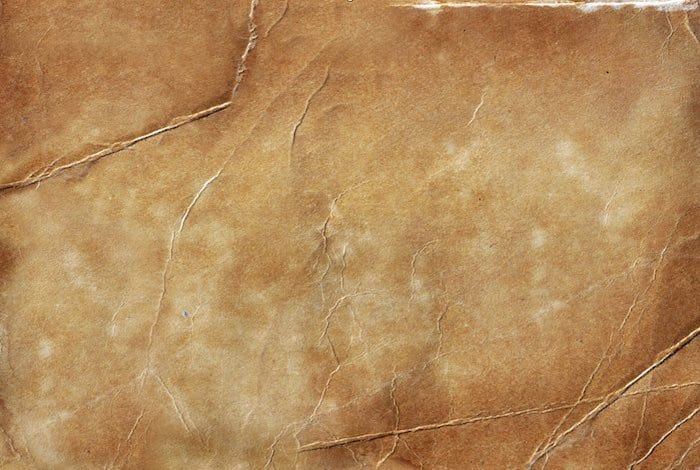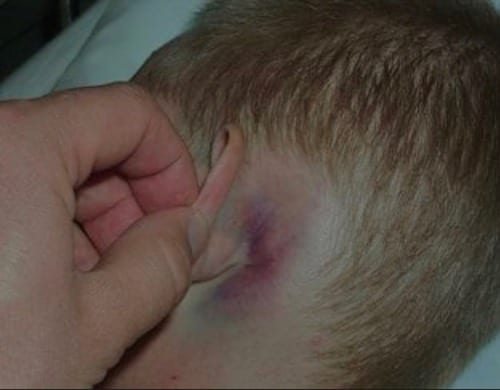Battle Sign
Description
A postauricular ecchymosis (bruising over the mastoid process) reflecting extravasation of blood along the path of the posterior auricular artery indicative of a base of skull fracture.
History
1890 – In a lecture series to the Royal College of Surgeons, Battle described the evolution of a postauricular ecchymosis in head- injured patients with presumed or confirmed basal skull fractures. Other cardinal signs of this condition were also described including otorhinorrhea, subconjunctival haemorrhage and peri-orbital ecchymoses (racoon eyes). He deemed a postauricular ecchymosis to be:
…a most important indication that the posterior fossa of the skull is the seat of the fracture” and concluded “that it appears, in the first place, in front of the apex of the mastoid process. That it often spreads upwards over the mastoid in a line, slightly curved, and with the convexity backwards, its direction being approximately that of the outline of the external ear, from which it is distant half to three-quarters of an inch
Battle WH, Lancet July 1890
These observations derived from approximately 17 clinical cases and were further explored in cadaveric studies where injection of fluid containing blue dye into the occipital musculature resulted in subsequent superficial migration to adjacent tissues. This supported Battle’s anatomical reasoning that extravasated blood would also move to more superficial tissues in the mastoid region along the course of the posterior auricular artery.
Associated Persons
- William Henry Battle (1855 – 1936)
Alternative names
- Mastoid ecchymosis
Controversies
As acknowledged by Battle, earlier observations of this sign were made by fellow surgeon Sir Prescott Hewett (1812-1891). Hewett remarked:
“Extravasation of blood, and consequent discolouration of the skin, appearing in the mastoid region some hours after a severe injury to the head, may lead to the suspicion of a fracture involving the posterior part of the base”
Unlike the time course alluded to above, Battle described this sign as manifesting “from the third to the fourth day after the injury, but its appearance may be delayed until the twelfth or fourteenth day”. As such the clinical relevance and sensitivity in the acute setting may be limited.
Direct trauma to this area may also produce a similar appearance. As acknowledged by Hewett
…all the more valuable will this sign become if the injury did not bear directly upon this region, and especially if it bore upon the opposite side of the head
It is unclear from Battle’s case series what proportion of patients with a presumptive diagnosis of skull fracture subsequently had confirmation of this at autopsy.
References
- Battle WH. Three Lectures on Some Points Relating to Injuries to the Head. Br Med J. 1890; 2(1540): 4-10
- Battle WH. Lectures on some points relating to injuries to the head. Lancet 1890; 136: 3489: 57–63
- Tubbs RS, Shoja MM, Loukas M, Oakes WJ, Cohen-Gadol A. William Henry Battle and Battle’s sign: mastoid ecchymosis as an indicator of basilar skull fracture. J Neurosurg. 2010 Jan;112(1):186-8
- Epperla N, Mazza JJ, Yale SH. A Review of Clinical Signs Related to Ecchymosis. WMJ. 2015; 114(2): 61-5.

eponymictionary
the names behind the name

